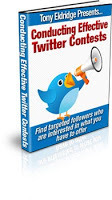The 7 Deadly Sins of Online Networking by Dana Lynn Smith
It's my pleasure to welcome back a returning guest to Marketing Tips For Authors, Dana Lynn Smith. Dana is a talented author and book marketer with a diverse and deep knowledge base when it comes to helping authors market their books. Today, she is going to discuss the 7 Deadly Sins of Online Networking.
For more great posts from our guest today, make sure you enter her name in the search bar at the top of blog and then visit her site, www.TheSavvyBookMarketer.com . Dana has also agreed to be a sponsor for my contest this spring, but more on that and her awesome prizes that she's donating in a couple of weeks.
Now, on to Dana's post...
The 7 Deadly Sins of Online Networking
by Dana Lynn Smith
Online networking is a wonderful way to meet people who share your interests, develop relationships with peers and potential customers, and ultimately increase book sales.
But there's sometimes a fine line between letting your contacts know about your book and being overly promotional. If you're too passive, you may not get much benefit from networking, but if you're too aggressive you may turn people off.
Here are seven common mistakes that authors make in online networking, along with tips on how to avoid them:
1. No book information or website links on social network profiles.
I'm amazed at how many authors don't even mention their books on their social profiles, or make it easy for people to find information about the book.
On your Facebook profile and fan page, include information about your book and a link to your book sales page and websites on the Info section. See this article for tips.
On Twitter, be sure to mention your book in the description on your profile page. You only have 160 characters to work with, so if you have several books you could say something like "author of four romantic suspense novels."
On LinkedIn, take full advantage of the "title" field. This space is designed for job titles, but you can use it to showcase your expertise and status as an author. For example: "Parenting expert and author of "Raising Happy Kids in a Crazy World." Your title will appear along with your photo any place that you interact on LinkedIn. Be sure to include a link to your book's sales page and your website in the web links section of your profile.
See this article for tips on choosing the best photo to use on your social networks.
2. Not mentioning your book in your status updates.
It's fine to talk about your book in the status updates that you post on social networks, as long as that's not your main focus and you're not too pushy. Be sure to intersperse your book messages with other types of messages (personal notes, tips, links to helpful resources, thoughts on a new book you just read, etc.)
I recommend that no more than 10% to 20% of your status updates be promotional or self-serving. No one wants to read a constant stream of "buy my book" messages.
One way to talk about your book without seeming too promotional is to discuss your marketing activities. Here are some examples:
I just received the preliminary cover designs for my new book – what do you think of these?
Today I'm contacting bookstores about setting up signings for my new novel, BOOKTITLE. It's available at www.booktitle.com.
I'm so excited! Just received word that my book, BOOKTITLE, has received an award . . .
I just scheduled a radio interview on KWTX to discuss tips from my book, BOOKTITLE. www.booktitle.com
Today I launched the redesign of my website for BOOKTITLE – what do you think? www.booktitle.com
And you can always mention events and special promotions:
If you're in the Seattle area, please join me at 3:00 p.m. on Sunday at . . . for a free presentation based on my book, BOOKTITLE. www.booktitle.com
The Kindle version of BOOKTITLE has just been released! You can find it at www.booktitle.com. If you don't have a Kindle, remember you can download the Kindle app and read ebooks right from your computer.
Monday Madness Sale! Spread the word -- today only, all of my parenting books are on sale for 30% off. Go to www.booktitle.com to order.
3. Sending blank friend requests on social networks.
More than 90% of the network friend requests that I receive have no introduction at all, and most of the others have generic notes like "let's be friends." The trouble is, I don't know who most of these people are.
Don't make this mistake when you send friend invitations. Be sure to introduce yourself—tell the other person who you are and why you want to connect. What interests do you share in common? If you know something specific about the person, say so. On Facebook and many other networks, you can click the "add a personal message" button in the "add as a friend" box, and type in a personalized greeting.
4. Posting promotional messages on other people's profiles or pages.
It's just bad manners to post promotional messages on other people's social network profiles or pages, especially those of your competitors. I delete any such posts from my own pages.
You usually have more leeway in posting messages on group pages. You can get a feel for the group's etiquette by observing that others are doing, but usually it's acceptable to make a wall post introducing yourself and your book, and also to share good news or resources with the group occasionally (see #2 above for ideas).
On my Savvy Book Marketing group on Facebook, I encourage authors to introduce themselves and their books (and post their book covers), but I don't allow repeated blatant promotional messages.
5. Getting too personal.
It's great to tell your online friends something about your interests, but if you're using social networks for business, you probably shouldn't be discussing your health issues, your mother-in-law, or your kid's problems. (Too much information!) It's also a good idea to be cautious about posting things like the dates you are gone on vacation.
If you actively use your Facebook profile to network with family and friends, you might want to reserve your profile for personal use and use your fan page for business.
6. Sending sales pitches to new people that you meet.
It's nice to do a wall post or send a message to new friends with a greeting (great to meet you, have a wonderful day), a compliment (your website is really terrific) or a note about something that you have in common. You can even invite them to visit your website, if you're subtle about it and include other things in the message. Just be careful that your message doesn't come across as a sales pitch – that's not the way to make a good impression on a new contact.
7. Abusing direct messages.
Many social networks let you send messages to your contacts or members of groups that you belong to. Unfortunately, some people abuse this feature.
On Facebook, the use of direct messages to send promotional pitches has become so prevalent that many people simply tune out their messages. On LinkedIn, someone in a group that I belong to sent me several sales pitches for her products by direct message. I've never heard of this woman and she's not on my list of connections.
If you use direct messages, do so sparingly and be cautious about annoying people – remember that they can "unfriend" you if they get tired of hearing from you. One way to use direct messages is to send a newsletter type of message that contains some helpful tips or resources, along with a link to your book at the end. You can also use direct messages occasionally to announce "news" such as your book launch.
Remember the golden rule of networking: treat others as you would like to be treated.
------
 Want to learn more about promoting through social networks? Check out The Savvy Book Marketer's Guide to Successful Social Marketing by Dana Lynn Smith. For more tips, follow @BookMarketer on Twitter, visit Dana's blog at www.TheSavvyBookMarketer.com, and get a copy of the Top Book Marketing Tips ebook when you sign up for her free newsletter at www.BookMarketingNewsletter.com.
Want to learn more about promoting through social networks? Check out The Savvy Book Marketer's Guide to Successful Social Marketing by Dana Lynn Smith. For more tips, follow @BookMarketer on Twitter, visit Dana's blog at www.TheSavvyBookMarketer.com, and get a copy of the Top Book Marketing Tips ebook when you sign up for her free newsletter at www.BookMarketingNewsletter.com.
--------
Tony Eldridge is the author of The Samson Effect , an action/adventure novel that Clive Cussler calls a "first rate thriller brimming with intrigue and adventure." He is also the author of the Twitter marketing book, Conducting Effective Twitter Contests .











For more great posts from our guest today, make sure you enter her name in the search bar at the top of blog and then visit her site, www.TheSavvyBookMarketer.com . Dana has also agreed to be a sponsor for my contest this spring, but more on that and her awesome prizes that she's donating in a couple of weeks.
Now, on to Dana's post...
The 7 Deadly Sins of Online Networking
by Dana Lynn Smith
Online networking is a wonderful way to meet people who share your interests, develop relationships with peers and potential customers, and ultimately increase book sales.
But there's sometimes a fine line between letting your contacts know about your book and being overly promotional. If you're too passive, you may not get much benefit from networking, but if you're too aggressive you may turn people off.
Here are seven common mistakes that authors make in online networking, along with tips on how to avoid them:
1. No book information or website links on social network profiles.
I'm amazed at how many authors don't even mention their books on their social profiles, or make it easy for people to find information about the book.
On your Facebook profile and fan page, include information about your book and a link to your book sales page and websites on the Info section. See this article for tips.
On Twitter, be sure to mention your book in the description on your profile page. You only have 160 characters to work with, so if you have several books you could say something like "author of four romantic suspense novels."
On LinkedIn, take full advantage of the "title" field. This space is designed for job titles, but you can use it to showcase your expertise and status as an author. For example: "Parenting expert and author of "Raising Happy Kids in a Crazy World." Your title will appear along with your photo any place that you interact on LinkedIn. Be sure to include a link to your book's sales page and your website in the web links section of your profile.
See this article for tips on choosing the best photo to use on your social networks.
2. Not mentioning your book in your status updates.
It's fine to talk about your book in the status updates that you post on social networks, as long as that's not your main focus and you're not too pushy. Be sure to intersperse your book messages with other types of messages (personal notes, tips, links to helpful resources, thoughts on a new book you just read, etc.)
I recommend that no more than 10% to 20% of your status updates be promotional or self-serving. No one wants to read a constant stream of "buy my book" messages.
One way to talk about your book without seeming too promotional is to discuss your marketing activities. Here are some examples:
I just received the preliminary cover designs for my new book – what do you think of these?
Today I'm contacting bookstores about setting up signings for my new novel, BOOKTITLE. It's available at www.booktitle.com.
I'm so excited! Just received word that my book, BOOKTITLE, has received an award . . .
I just scheduled a radio interview on KWTX to discuss tips from my book, BOOKTITLE. www.booktitle.com
Today I launched the redesign of my website for BOOKTITLE – what do you think? www.booktitle.com
And you can always mention events and special promotions:
If you're in the Seattle area, please join me at 3:00 p.m. on Sunday at . . . for a free presentation based on my book, BOOKTITLE. www.booktitle.com
The Kindle version of BOOKTITLE has just been released! You can find it at www.booktitle.com. If you don't have a Kindle, remember you can download the Kindle app and read ebooks right from your computer.
Monday Madness Sale! Spread the word -- today only, all of my parenting books are on sale for 30% off. Go to www.booktitle.com to order.
3. Sending blank friend requests on social networks.
More than 90% of the network friend requests that I receive have no introduction at all, and most of the others have generic notes like "let's be friends." The trouble is, I don't know who most of these people are.
Don't make this mistake when you send friend invitations. Be sure to introduce yourself—tell the other person who you are and why you want to connect. What interests do you share in common? If you know something specific about the person, say so. On Facebook and many other networks, you can click the "add a personal message" button in the "add as a friend" box, and type in a personalized greeting.
4. Posting promotional messages on other people's profiles or pages.
It's just bad manners to post promotional messages on other people's social network profiles or pages, especially those of your competitors. I delete any such posts from my own pages.
You usually have more leeway in posting messages on group pages. You can get a feel for the group's etiquette by observing that others are doing, but usually it's acceptable to make a wall post introducing yourself and your book, and also to share good news or resources with the group occasionally (see #2 above for ideas).
On my Savvy Book Marketing group on Facebook, I encourage authors to introduce themselves and their books (and post their book covers), but I don't allow repeated blatant promotional messages.
5. Getting too personal.
It's great to tell your online friends something about your interests, but if you're using social networks for business, you probably shouldn't be discussing your health issues, your mother-in-law, or your kid's problems. (Too much information!) It's also a good idea to be cautious about posting things like the dates you are gone on vacation.
If you actively use your Facebook profile to network with family and friends, you might want to reserve your profile for personal use and use your fan page for business.
6. Sending sales pitches to new people that you meet.
It's nice to do a wall post or send a message to new friends with a greeting (great to meet you, have a wonderful day), a compliment (your website is really terrific) or a note about something that you have in common. You can even invite them to visit your website, if you're subtle about it and include other things in the message. Just be careful that your message doesn't come across as a sales pitch – that's not the way to make a good impression on a new contact.
7. Abusing direct messages.
Many social networks let you send messages to your contacts or members of groups that you belong to. Unfortunately, some people abuse this feature.
On Facebook, the use of direct messages to send promotional pitches has become so prevalent that many people simply tune out their messages. On LinkedIn, someone in a group that I belong to sent me several sales pitches for her products by direct message. I've never heard of this woman and she's not on my list of connections.
If you use direct messages, do so sparingly and be cautious about annoying people – remember that they can "unfriend" you if they get tired of hearing from you. One way to use direct messages is to send a newsletter type of message that contains some helpful tips or resources, along with a link to your book at the end. You can also use direct messages occasionally to announce "news" such as your book launch.
Remember the golden rule of networking: treat others as you would like to be treated.
------
 Want to learn more about promoting through social networks? Check out The Savvy Book Marketer's Guide to Successful Social Marketing by Dana Lynn Smith. For more tips, follow @BookMarketer on Twitter, visit Dana's blog at www.TheSavvyBookMarketer.com, and get a copy of the Top Book Marketing Tips ebook when you sign up for her free newsletter at www.BookMarketingNewsletter.com.
Want to learn more about promoting through social networks? Check out The Savvy Book Marketer's Guide to Successful Social Marketing by Dana Lynn Smith. For more tips, follow @BookMarketer on Twitter, visit Dana's blog at www.TheSavvyBookMarketer.com, and get a copy of the Top Book Marketing Tips ebook when you sign up for her free newsletter at www.BookMarketingNewsletter.com.--------
Tony Eldridge is the author of The Samson Effect , an action/adventure novel that Clive Cussler calls a "first rate thriller brimming with intrigue and adventure." He is also the author of the Twitter marketing book, Conducting Effective Twitter Contests .










Published on March 17, 2011 04:02
No comments have been added yet.





